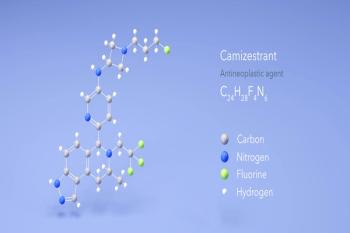
Pediatric AD Data Show Strong Safety and Efficacy for Tapinarof Cream: Druhan Howell, MD
Phase 3 ADORING data show tapinarof cream delivers early, consistent skin, itch, and sleep improvements in children with atopic dermatitis, with low adverse event rates.
Captions are auto-generated.
New data supporting the safety and efficacy of tapinarof cream 1% (Vtama; Organon) for pediatric patients with atopic dermatitis (AD) were presented at the American College of Allergy, Asthma, and Immunology, based on positive outcomes from the phase 3 ADORING (NCT 05014568) clinical trial.1
“When we're seeing itch control, disease state control with our vIGAs, remaining low,” said Druhan Howell, MD, a pediatric allergist and immunologist specialist at Coastal Allergy & Asthma, in an interview with The American Journal of Managed Care®. “That is important to be talking about with our patients and families, because that is quite frankly different than a lot of the
Improvements in patients' vIGA-AD were observed as early as week 1 and were stable through week 8 in children with and without comorbidities when compared with the vehicle (with comorbidities: 42.3% with tapinarof cream vs 11.8% with vehicle; P < .0001; without comorbidities: 49.5% vs 14.8%, respectively; P < .0001). Similarly, researchers also observed patient EASI scores improve as early as week 1 and remain consistent through week 8.
POEM and mean POEM sleep scores also improved as early as week 1 and remained consistent through week 8. Improvement in scores, Howell said, is also associated with improved performance for school and work for both patients and parents, as pediatric patients are less likely to spend the night scratching and in pain from their condition.
“When little kids don’t sleep, nobody sleeps, right?” Howell said. “And for older children, you have to think that poor quality of sleep is affecting their academic performance…. [But] when we're getting good-quality sleep again, everything else kind of improves as a consequence of that.”
Safety, Howell said, is always a significant factor when discussing starting
“I haven't had many people come back and respond that they have had or have seen these safety signals personally,” Howell said. “That doesn't mean I won't in the future, but at least in the present, I haven't. And I talk to them so that patients’ parents are aware, and if they do see them, that they can contact me and we can guide them through.”
The improvements were sustained with treatment-free intervals up to 80 days, suggesting significant relief for parents who have been managing multiple AD therapies multiple times a day.
“It is really revolutionary from a clinical practice standpoint,” Howell said. “To be able to say, ‘Hey, I can make your skin clear, we can keep it clear, and we're not going to have to apply medicine every day.’”
References
1. New data show early and consistent response to VTAMA (tapinarof) cream, 1%, in children aged 2+ with atopic dermatitis, including those with associated comorbidities. News release. Organon. November 8, 2025. Accessed November 21, 2025.
2. Silverberg JI, Eichenfield lF, Hebert AA, et al. Tapinarof cream 1% once daily: significant efficacy in the treatment of moderate to severe atopic dermatitis inadults and children down to 2 years of age in pivotal phase 3 ADORING trials. J Am Acad Dermatol. 2024;91(3):457-456. doi:10.1016/j.jaad.2024.05.023
Newsletter
Stay ahead of policy, cost, and value—subscribe to AJMC for expert insights at the intersection of clinical care and health economics.













































